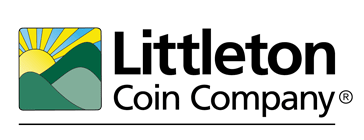
An Intriguing Collector’s Niche:
Historic Coin Postcards
Over the years, I’ve expanded my interest in coins to include historic coin postcards. These are not the typical souvenir postcards we associate with events, such as the Columbian Exposition of 1893 in Chicago. These fascinating postcards feature embossed colored coin images printed with metallic ink. They very accurately simulated the actual coins, and date from 1900 to 1920, or so. I started out finding one or two at a time, here and there. Then, quite a few years ago, I made a lucky purchase of a bound 48-card album of coin postcards. I set it aside in my numismatic library, intending to find out more about it, and write something up for Littleton Coin customers to enjoy. That was about 30 years ago!
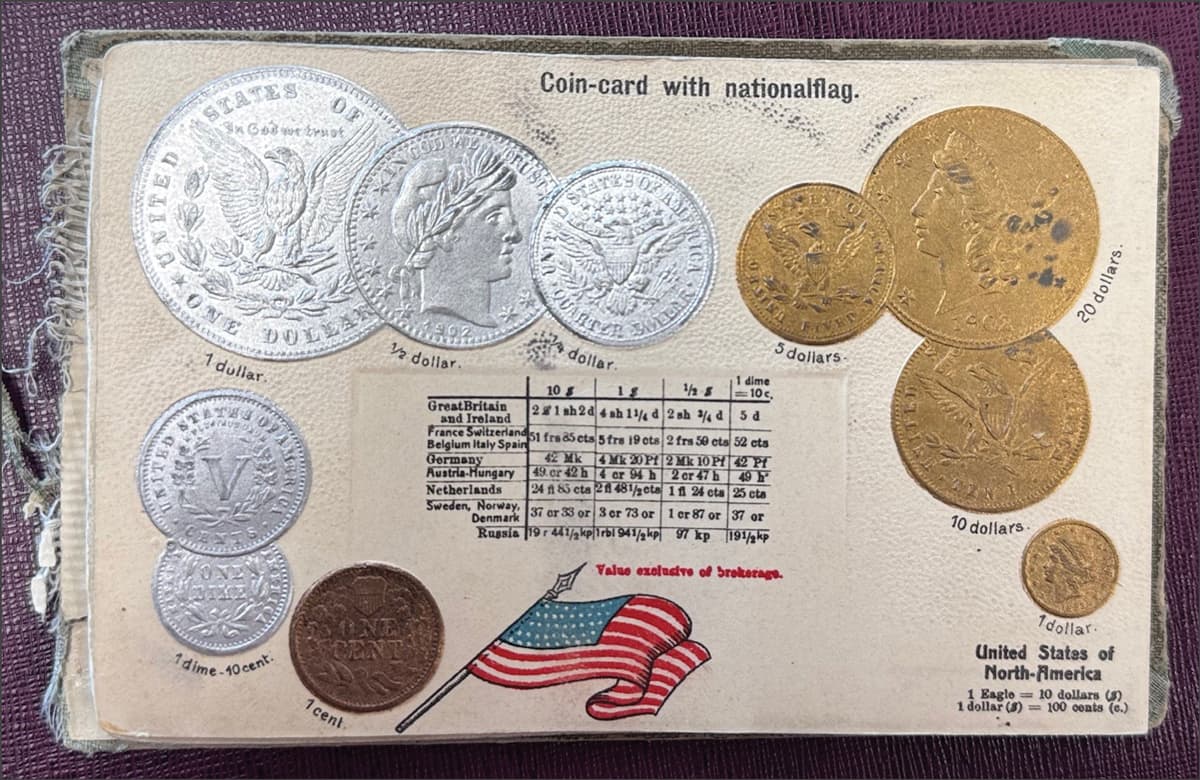
What I learned from the Numismatic Bibliomania Society’s E-SYLUM
Recently, I recalled reading about one of the cards in the E-Sylum, a weekly electronic newsletter published by the Numismatic Bibliomania Society. This is a two-decade-old newsletter for numismatic bibliophiles, researchers, and just plain numismatists around the world – anyone can sign up to use this resource. I have been a member of the NBS organization since it was founded. If you’re interested in joining the NBS, you can do so at https://www.coinbooks.org/. To receive the E-Sylum, sign up at https://www.coinbooks.org/ad18.html.
Following various articles on the subject in the E-Sylum archives from 2005 to the present, I learned a great deal about coin postcards, thanks to researchers and collectors Wayne Homren, Dick Johnson, Frank Draskovic, David Gladfelter, Myron Xenos and Don Kolkman. Special shout-out to Wayne, E-Sylum’s editor. What follows was gleaned from their contributions.
Coin postcards used by ‘cambists’ for exchange rates
The first card in my album features a photo of William Howard Taft, who served as 27th president of the United States from 1909 to 1913. Beside him is a US flag. Surrounding are several coins: a Morgan dollar reverse, 1902 Barber half dollar obverse, a Barber quarter reverse, $5 Liberty gold, 1902 $20 Liberty gold obverse, $10 Liberty gold reverse, 1853 $1 Liberty gold dollar [a coin that is a fantasy!], a V nickel reverse, a Barber dime reverse and an Indian cent reverse. From this you can figure that the postcard was likely issued in 1908-09 – before the Lincoln Cent design was adopted.
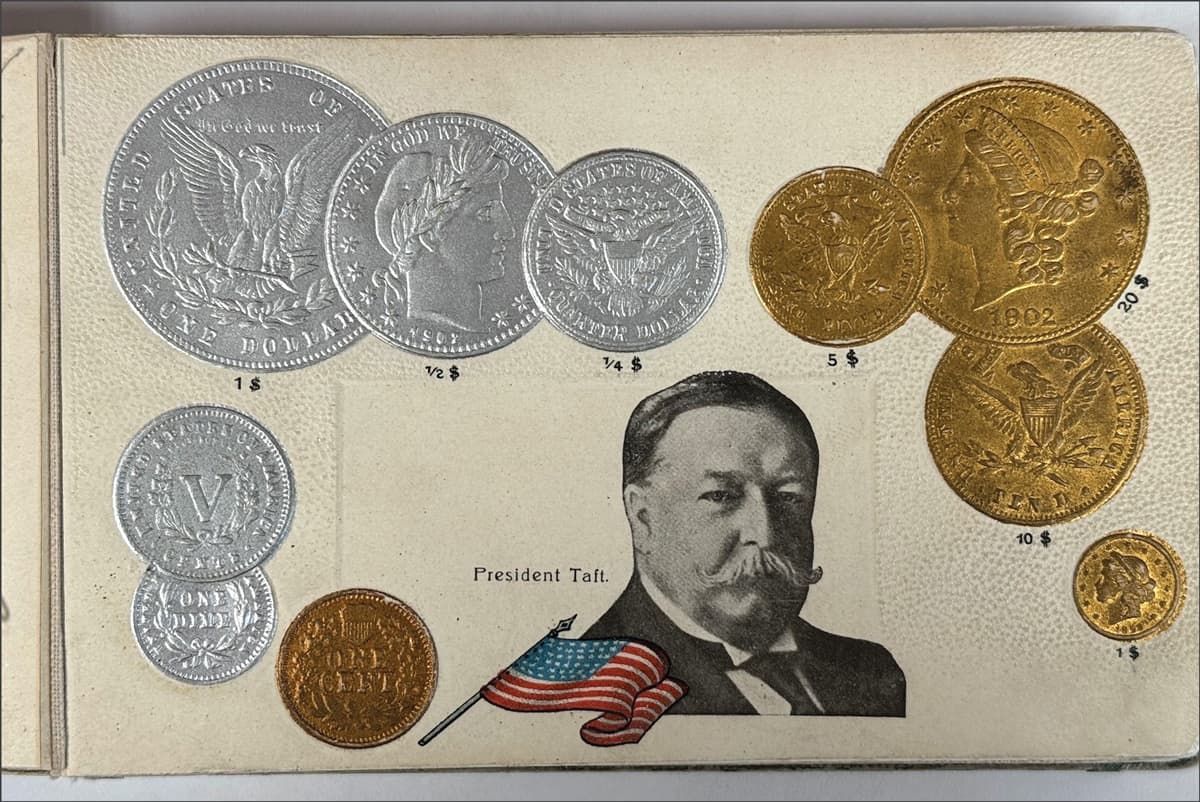
According to David Gladfelter, these cards were originally produced by H.S.M., otherwise known as Hugo Semmler of Magdeburg, Germany. The 48-card set I have was published by Fortuna Hornung, proprietor of a stationery store in Vienna, Austria until 1914, when WWI began.
Based on my review of the coin images on the 48 cards, and the President Taft card, I believe my album was originally assembled circa 1908-1909. They feature copper, nickel, silver and gold coins from around the world with coin dates ranging from 1853 to 1907. Usually there is a separate postcard for each country, with exchange rates listed in various world currencies (presumably where these postcards were sold). Represented are Great Britain and Ireland; France-Switzerland-Belgium-Italy-Spain; German, Austria-Hungary, Netherlands, Sweden-Norway-Denmark, and Russia.
For bankers and money handlers in those countries, these postcards would have been invaluable. They illustrated both exchange rates and coins – in actual size, and in color. Some carry the text “Post-card with national flag, to give information about the international coinage.” Usually money exchangerate information of this type would be distributed as a black and white listing, called a cambist. It typically consisted of line-drawings in pamphlet or book form, and would have been updated periodically on a subscription basis. Bankers and money-exchange offices would be the primary audience.
New information suggests these coin postcards were also marketed as cambists, with exchange rates printed in the center panel in this HSM card series. By adding a new coin postcard with new coinage of a country, a banker or money handler could easily update the set.
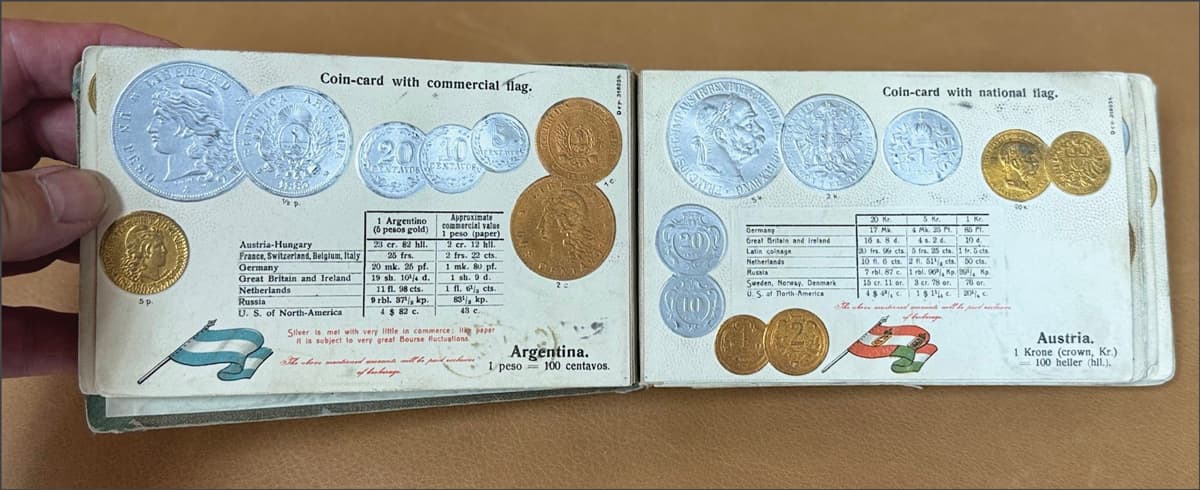
Around the world with 48 coin postcards
As older coins circulated for many decades in a country and were seldom withdrawn, older information would remain valuable to them. I imagine that the majority of these cards sets were marketed in Europe and other countries, where coins of the world would need to be exchanged. Major U.S. cities doing international trade would have a need for this exchange rate information, as well.
In the E-Sylum articles, I learned the dies for the cards were made from casts of original coins. The cards were assembled back-to-back so that only the face of the cards is shown, and bound together. The text is in primarily English, although the Danish card is in Danish, English and French while the Persia and Siam cards are in French and English.
The countries in my album are: United States of America (2 different cards), Hungary, Vatican City, Argentina, Austria, Belgium, Brazil, Bulgaria, Chile; China’s provinces of Kwang-Tung and Hu-Peh; Denmark, Ecuador, Egypt, Finland, France, Germany, German East-Africa, German New Guinea, Great Britain and Ireland, along with the Empire of British India and Ceylon. Plus, the British Colonies of: Stratis Settlements-Hong Kong, Greece, Hungary, Italy; Japan (2 different cards, one featuring embossed gold coins); Morocco, Mexico; Netherlands and Netherlandish India; Norway, Persia, Peru, Portugal, Romania, Russsia, Servia, Siam, Spain, Sweden, Switzerland, Transvaal, Tunis, Turkey (2 different cards), Uruguay and Venezuela.
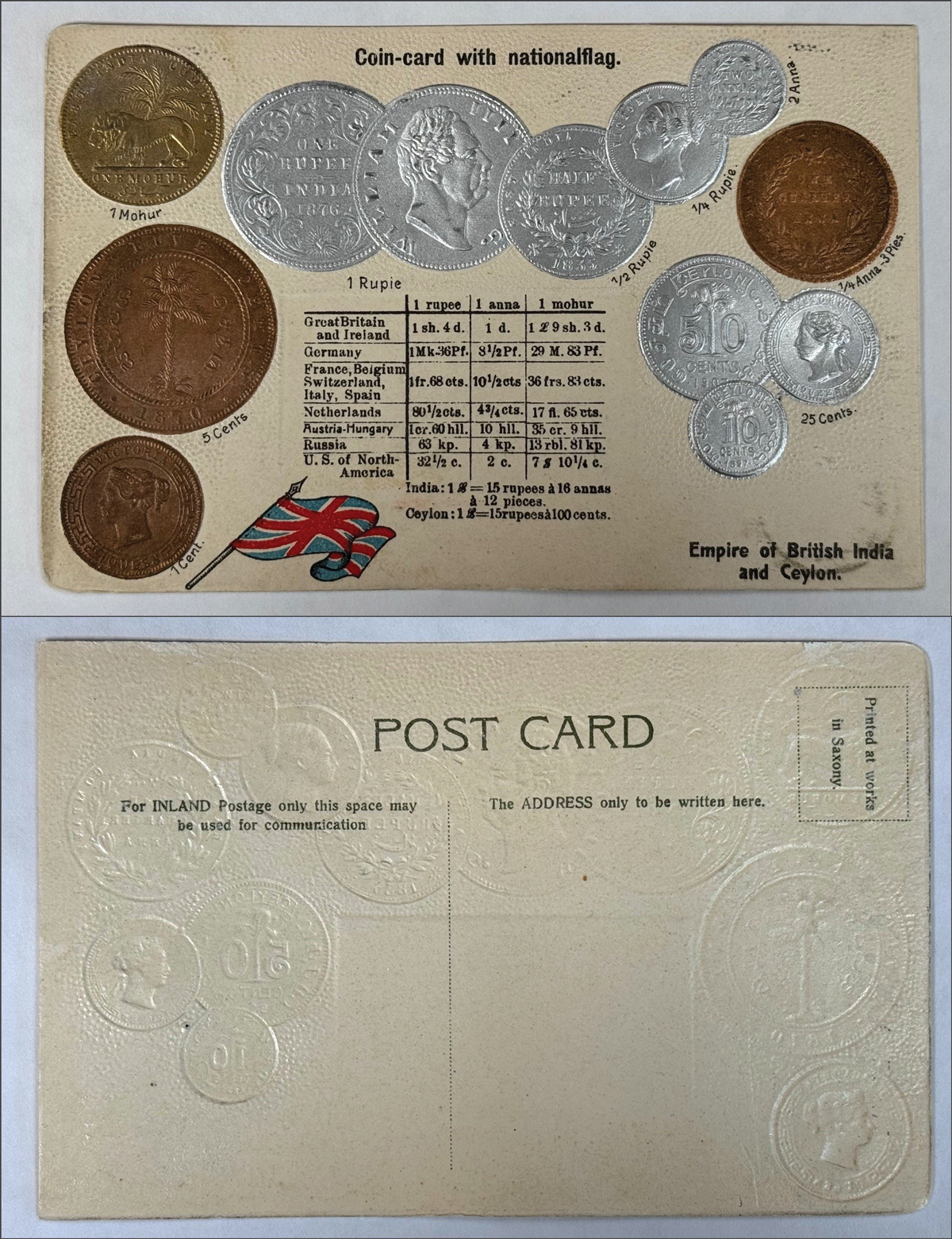
Most of my album’s cards are tightly glued together, but a few have dried out and separated in the past 100+ years to show the postcard back (seen at right). From the wording “For Inland Postage only. This space may be used for communication” you can assume this card was likely manufactured for use in Great Britain and Europe.
Have you collected a few coin postcards over the years? They are a lot of fun. I only wish I had enough cards to offer to you and our other customers.
